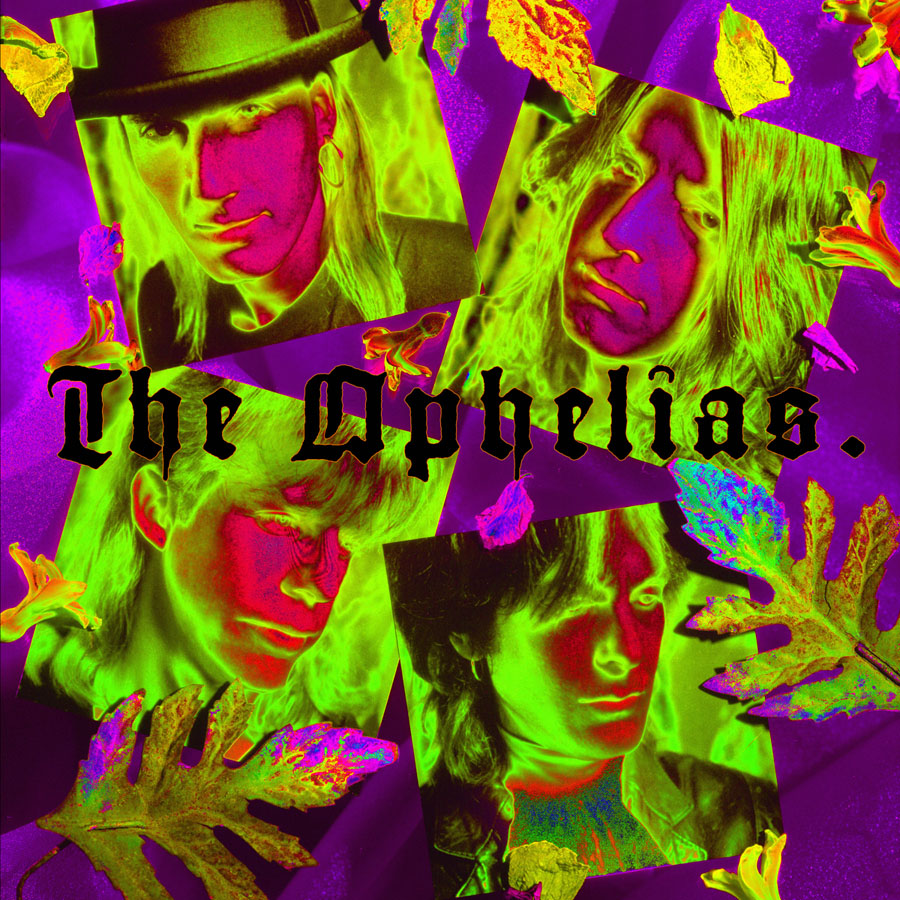
Concerning the Imminent Release of Bare Bodkin – Codex Opheliana – On Independent Project Records
–Effingham le Tuer, 2021
The Ophelias burst out of the San Francisco indie rock scene in 1985 with their remarkable cover of the Southern folksong “Mister Rabbit” which immediately brought them national attention in the underground, a photograph in Spin, and a reputation for engaging, truly psychedelic live performances. Their first, self-titled LP appeared in early 1987 to widespread acclaim. “Almost every reviewer has considered them the most innovative band out of San Francisco in many years,” wrote Bob O’Brien in the LA Times. Soon thereafter signed to Rough Trade US, two more LPs and an EP would follow, all garnering much positive press. Second LP “Oriental Head” charted Top 35 at 160 radio stations, Top 10 at 48, and #1 at 9, but Rough Trade stateside was in shaky financial health and the label folded in 1990 with The Ophelias as part of the collateral damage. Lead guitarist David Immerglück was recruited by Camper Van Beethoven and Counting Crows, and bandleader Leslie Medford disappeared.
The star-crossed tale of The Ophelias (for instance, national tours in support of Pere Ubu and Crime & the City Solution both fell through at the eleventh hour) may be part of their Scarlet Pimpernel appeal, but to the band it was bad theater. Still, an informed few (like Music: What Happened? author Scott Miller) consider The Ophelias one of the very best bands of the 1980s. As an outfit inspired by psilocybin should be, they were neither average nor predictable; indeed, contradiction was the group’s calling card. “The Ophelias are about the both of things: light and dark, masculine and feminine, high and low, comedy and tragedy, rationality and the unhinged,” said The Hard Report. There is no denying their post-punkish slant, but with perhaps more in common with the experimental and adventurous bands of the Sixties and Seventies, with an English bent and a Shakespearean name, things were certain to go awry in late-Eighties USA for an underfunded combo whose most accurate comparison may be Spiders-era Bowie, Nadir-era Hammill, or Piper-era Floyd. The mass of American teenagers remained bewildered.
“It’s hard for me to imagine a more audacious guy than Ophelias singer/conceptualist Leslie Medford,” wrote Ann Powers in the SF Chronicle. “Collectors and critics will probably rediscover The Ophelias in fifteen years and write blathering essays about Medford’s psychosis-tinged genius.” Well, that time is now! Because in 2022 Bruce Licher’s storied Independent Project Records – known for its elegant, deluxe album packages – will release on compact disc and vinyl Bare Bodkin : a 15-song career-spanning compendium (including 5 remarkable, never-released studio tracks) of which Medford says, “I approached Bare Bodkin as if it would be the last will and testament of The Ophelias, as if it alone might be our legacy – a kind of personal statement about my feelings as to the prime aesthetic thrust of The Ophelias.” The band released many other memorable studio tracks in addition to those included on this compendium, and the live albums now streamable online offer the brain a veritable universe of surprising punk and psychedelia far more edgy and garage-y than Bare Bodkin – and it’s great bold stuff! But one must agree with Medford that at The Ophelias core is high-art high-drama lysergic dream theatre, and Bare Bodkin is a pretty perfect distillation of the multifaceted and strange magic of this remarkable band.
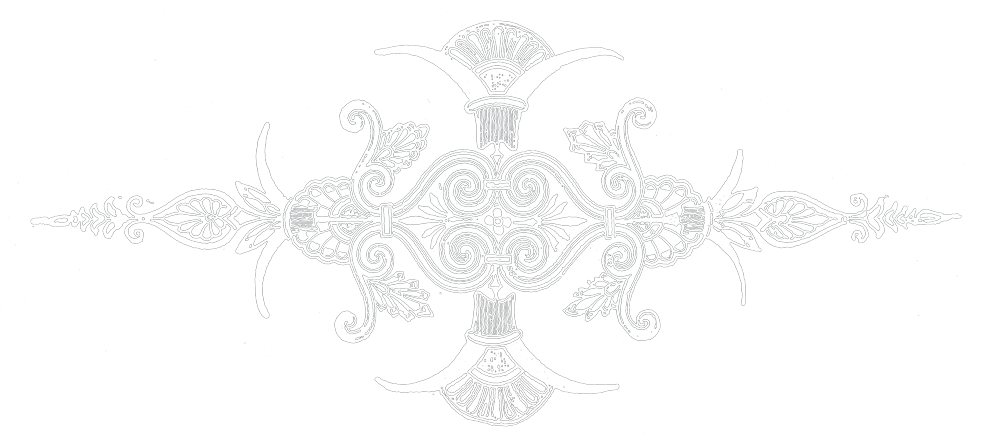
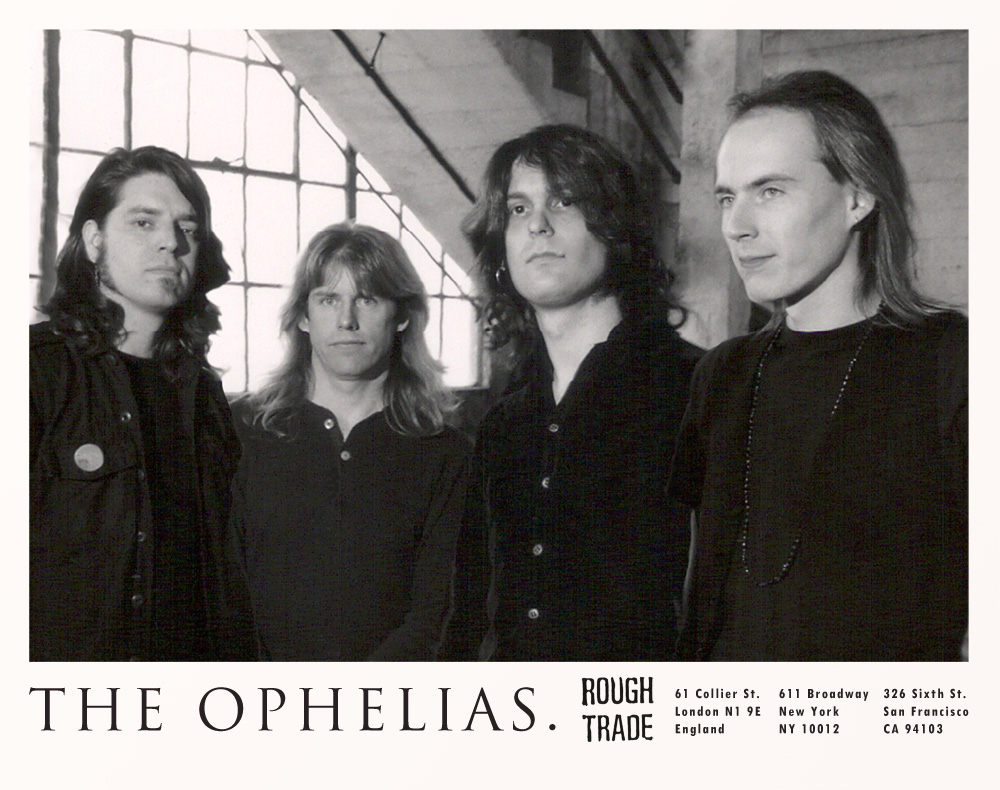
The Ophelias : My attempt at Cutting to the Chase.
–Alexander Carlisle, 2019
Art-Punk, Progish-Psychedelia? The Ophelias are most accurately comparable to 1970-’71 David Bowie, Syd Barrett and early Pink Floyd, early Killing Joke, The Kinks, Led Zeppelin, Bob Dylan – mostly because of the harmonica – and The Mothers Of Invention. The singer, Leslie Medford, is highly idiosyncratic, making them “unmistakable” I’m sure. A good deal of the time he sounds slightly unhinged – as Ophelia the madgirl, perhaps. With warble and flutter reminiscent of Marc Bolan, Ray Davies or Blind Owl Wilson; Robert Plant-ish caterwauls, Peter Hammillian screams, and fragile sweetness à la The Incredible String Band; Medford’s vocals will not be ignored. I’m trying to be as accurate as possible here, because according to many The Ophelias were “weird”, and this perception of them as purposely strange impeded their career. I postulate that if they had been active in 1968-72 instead of 1984-89 there would have been no such perception and they would now be among the truly celebrated bands of rock and roll history.
Medford tripped on psilocybin a lot, even on stage. The Ophelias smoked marijuana constantly and fairly guzzled beer. They were in their twenties and they were a real rock and roll band. The psilocybin does perhaps stand Medford apart and inject something genuinely Dalíesque, but certainly no moreso than Barrett’s mandrax, and none of the comparable bands listed above were anywhere close to “straight” musically or otherwise. Adventuring is at their core, as it is with The Ophelias.
I do not mean to send the listener on a hunt to find echoes of other bands in the recordings made by The Ophelias. You can do that and find many other famous bands poking through here, there and everywhere. The Ophelias don’t settle into any one style, and while echoes of others abound, those echoes do not overwhelm the uniqueness of The Ophelias brand. In toto they don’t sound like anyone else, they sound like The Ophelias, a multifaceted, idiosyncratic, eccentric band…like all the best ones.
The point is, for listeners who like the comparable groups mentioned above, and particularly to those who additionally enjoy smoking pot while listening, and most particularly to those who relish intelligence, adventure and unpredictability in their rock and roll, you will find something very special in The Ophelias.
Should you give The Ophelias a real, devoted exploration? There are so many bands, old and new, one must use one’s listening time well, and often such tangents prove time consuming and unrewarding. Personally, I have The Ophelias among my 50 all-time favourite bands. The time I spend with them I consider well-spent indeed.

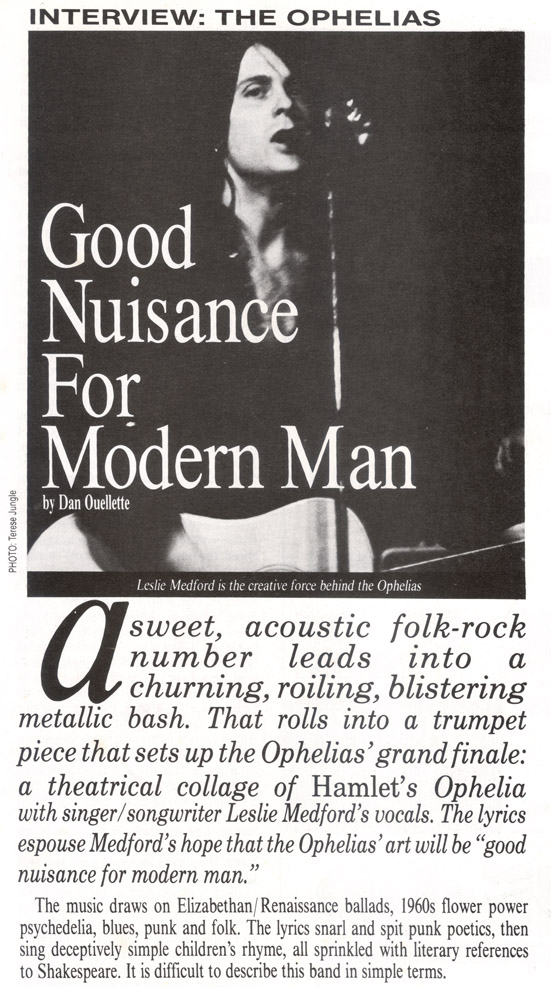
The Ophelias : My attempt at…I don’t know!
–Thom Cahill, 2019
I “managed” the ungovernable Ophelias for less than a year and I cannot say I came away completely unscathed. I was scathed by their sense of adventure. I was scathed by their madness. I was scathed by their music. And I was scathed when my visa got revoked, in part due to a what should have been a routine traffic stop complicated by the, oops, discovery of a small bag of psilocybin mushrooms on the back seat. Leslie Medford is truly one-of-a-kind and the entry of David Immerglück made them a true uberforce on the underground scene. Things were in real flux in the music industry at that time. I believe The Ophelias would have had a long career if they had been earlier or later, but they were too odd and uncategorizable for their time. They weren’t part of – or even close to – any fashionable musical trend or movement, and mid-eighties San Francisco was definitely not where they should have been. Europe certainly. And they still sound completely fresh. “Uncompromising” is probably not the right word for Leslie Medford. He was simply him. He was far out. Genius? Insane? I don’t know…but he knew what he was on about, and the force with which he lived made others – including myself – defer rather than advise. In retrospect I am sure I could have done more, and I’m sorry I didn’t. He deserved a long career more than almost anyone I can think of.
Being an Irish hippie The Ophelias reminded me of the great rock ‘n’ roll flights-of-fancy of my youth. Not so much specific comparables but the lot of the best intended, the real sparks, like The Incredible String Band, The Kinks, Syd Barrett, Daevid Allen’s Gong, T-Rex and Zeppelin, The Who, and the English art-punks like Killing Joke and PiL. I know those are big names, and that Leslie won’t mind my bemoaning that he didn’t get there…but even with only a hat trick of released vinyl long-players The Ophelias blazed a brief, incendiary, serious shenanighan through the late-eighties. Sadly, Rough Trade UK remained ignorant to what they had in their roster.
I am pleased to be invited to write a few lines of praise here. The consistency of the overdriven sonix of all this live performance material combines with just the right pacing to make this CD work as a single piece, and somehow illuminate the Medford method to the Medford madness. And I had no idea these recordings from a tour I helped arrange were extant. Extraordinarily inspired.

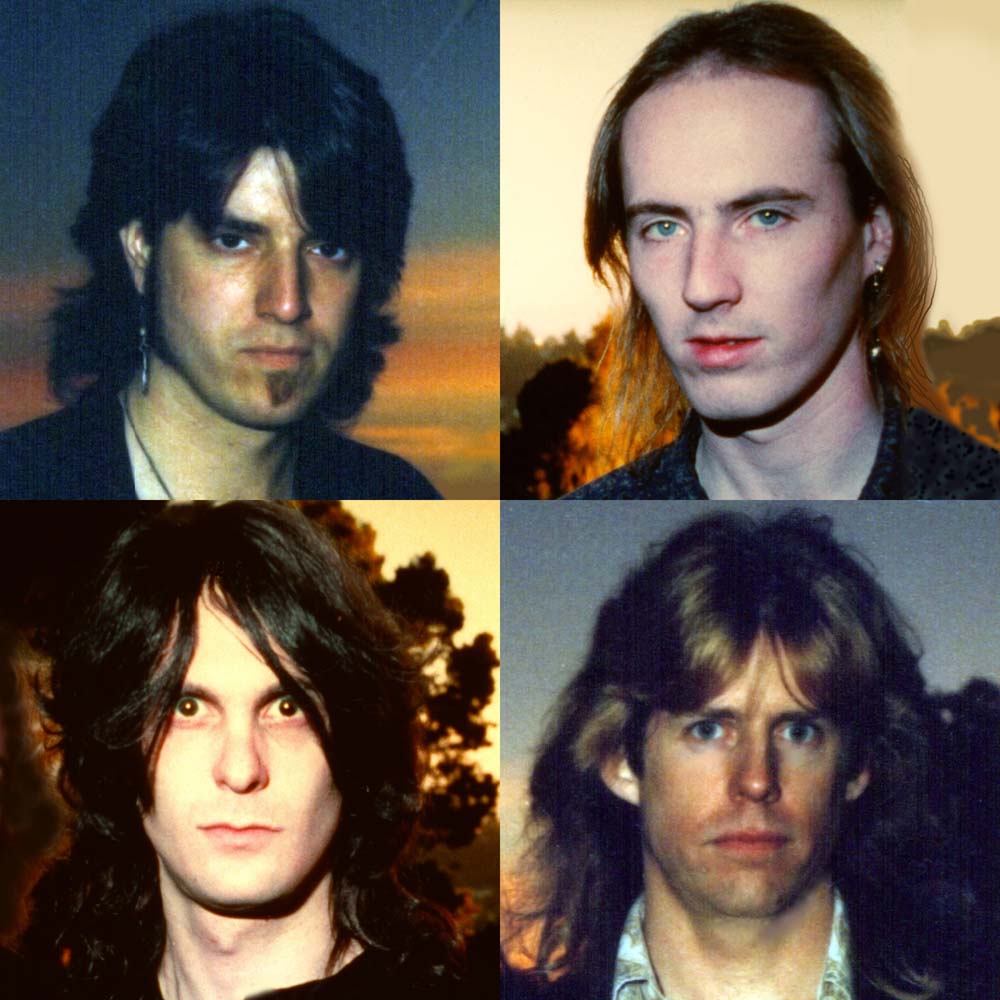
Thus spake Psilocybin: Sleeve Notes
–Leslie Medford, 2021
There’s a knock at my door. Here is my side of the ensuing exchange…
Hello?
Are you looking for Same Ol’, Automation & Dreck? They’re down several flights. You must’ve passed them coming up.
No, this suite is Ecstasy & Inspired, you see. Like Iggy, Ziggy, Syd and Can, see?
Oh, this is what you want? Well come in, come in. Happy to meet you. Sit you down. Imbibe at will! And good timing! We’ll be coming on in just a minute. (slyly:) Be very, very unafraid!

There’s a famous student housing cooperative in Berkeley called Barrington Hall. You can look it up on Wikipedia. It has a very psychedelic reputation, and for good reason. The Ophelias were hired to play at one of their official Punch Bowl Wine Dinners on 1 October 1988 with Acid Rain opening, but that’s another story. This is about the co-op’s largesse to the Oafs almost a year before that gig, and how we recorded some open rehearsals at Barrington Hall which are included on Thus spake Psilocybin. These include not only David Immerglück’s first recordings with us, but astonishingly(!) these were made during the first, second, and third occasion he ever strapped on his various guitars as a member of The Ophelias. As you listen to these tracks keep that in mind!
Through my friend Eden Unger (bassist of Rude Girlz and Legal Reins) The Ophelias received permission from the Barrington Hall student council to hold once weekly rehearsals there on the three Saturdays of the University of California’s Christmas break of 1987-88. Some further background:
On 16 September 1987 Keith Dion played his last show with us, and during November and December of 1987 The Ophelias held auditions at Capp Street Studios in San Francisco to find a guitarist to replace him. David Immerglück was the ninth to audition, so he was right about in the middle of a sequence of auditions spread out over 47 calendar days. Davy’s audition was on 24 November and, as well as being outrageously personable he set a musical standard no one else achieved. So on 17 December, after the last candidate was given a fair hearing, Terry, Edward and I reached consensus at Nickie’s Bar, 466 Haight Street, as to who should be offered the spot. David Immerglück was asked to join The Ophelias via telephone call on 18 December and he immediately accepted. Our first evening at Barrington Hall was scheduled for the very next day, 19 December We also would rehearse at Barrington on 26 December and 2 January. Festive!
Though Rough Trade Records had released our The Night of Halloween e.p. that previous July, throughout the autumn Terry von Blankers, Edward Benton and I had been in negotiations with Rough Trade about officially signing to the label. Now with Davy aboard to make us a four-piece again and steadying our ship to everyone’s satisfaction a contract was signed and we turned our attention to prepping for the album which would be recorded in January and February and released on Rough Trade in May of 1988, called Oriental Head.
Not all by any means, but a good deal of Thus spake Psilocybin is boombox cassette rehearsal recordings made during those three evenings at Barrington Hall as Davy was taken into the band and we went through both old and new material, as well as cooking up new things on the spot. After final exams at UC Berkeley, I would venture that the occupancy at Barrington Hall dipped by more than 50%, but dozens of its denizens remained throughout the holidays. On the ground floor – I think it had 5 or 6 floors – was a large interior dining room just off the kitchen, and for much of the mid- and late-Eighties they hosted bands with regularity on Saturday nights, so they had a nice little stage elevated perhaps a foot above the “dance floor”, and a PA system. Students who lived in Barrington Hall were used to loud music, and many seemed to enjoy the Oafs doing weird shit the three Saturday nights of the school break. People would come in, lounge about, lay on pillows and beanbag chairs, gyrate a while, or perhaps disappear in smoke. Outside of a couple (inevitable) impish pranks there was a general atmosphere of respectfulness and they pretty much left us to our own devices up on the little stage even when there were 20 people observing us. We were certainly grateful to have a place to make some noise with our new guitarplayer since we were particularly hard-pressed financially at this point, and it allowed us to avoid paying rehearsal studio rent while prepping for the recording sessions and our first touring with David. (We would be going up to British Columbia and back down to L.A. in late March early April.) At Barrington Hall there was much starting and stopping of course, since these were indeed practice sessions, but as you will hear on Thus spake Psilocybin there were also uninterrupted run-throughs and extempore improvisations a-plenty. And the tapes would seem to prove there were some inspired, ecstatic performances. Davy was a monster from the get-go, an incredibly melodic player, and sympatico with what the Oafs were already and/or wanted to become. Along with the beer, weed and mushrooms, Immerglück totally lit us up, made us a mobile, fleet, heavy and light brigade that could turn on a dime and express our shared flight of fancy as never before.
Speaking of Iggy, Ziggy and Barrett – and throw in Ricky Williams of The Sleepers/Toiling Midgets for some Frisco flavor – if one knows only the studio albums and nothing at all of the live performances, won’t you be missing half the story? This is The Ophelias problem as well. We were a different animal live, and our (now) three live albums – Green Girl, O List!, and Thus spake Psilocybin – show that key ecstatic side of the band. By getting to know these three albums, fans of adventurous rock music can gain a truer understanding of why our band was truly special.
Thus spake Psilocybin, like all Ophelias albums, has been set up carefully to take the listener on a trip. It is intended to be taken in like a feature film, from beginning to end in one sitting. Just as other adventurous music, it may take a few listens before understanding begins. Is that such a tall order? Perhaps it is these days, and furthermore Thus spake Psilocybin is a full-on double LP, so that’s a lot of music. Like a trip, there are some, what I call, punishing moments. By that I mean: difficult, loud, brash, shocks, bits of over-the-top, errors? Breaking it into halves is perfectly fine.
The Ophelias made extemporaneous art often. It made us unique – at least there are very, very few rock bands that do this – that is: play completely unplanned music as part of their public performances. And with David Immerglück The Ophelias had a melodist and colorist supreme. Drummer Edward Benton has remarked often about how we listened to each other on stage in a way he never encountered in any of his many other bands. Thus spake Psilocybin has 21 minutes of pure extemporaneous playing: the “Ophelias in the Underworld” stuff, including “Spores”. There was zero planning to these, zero discussion about what we were going to do; songs were simply launched, and the players had to react in real time. But there was listening to each other, watching each other, and the players knew that I was going to be singing things and imposing some sort of musical direction as we went. In this way we were making “songs”, not just instrumental “jams”.
Along with these pure, off-the-cuff compositions, we also performed covers-without-rehearsal at Barrington Hall. Pink Floyd’s “Fearless” and the Kinks “Victoria” were spur of the moment suggestions of David’s and we had a go. This was the only time we ever played these two songs. All four of us were, I guess, familiar enough with them to give them a sensitive reading – the results speak for themselves. The cassette tape ran out while performing the latter, and I muffed some of the words in the former, but who cares? Introducing Gospel Plow into Fearless was of course done after the fact, but it echoes the Floydian use of “Never Walk Alone” in the original. What’s even better is my sister Virginia and I are singing on the a cappella choir recording used, so in a way it’s all “us”. Though performing unrehearsed covers in public was not something The Ophelias usually did, Davy’s suggestions at Barrington Hall were perfect vehicles for illustrating just what a perfect Ophelia he already was! Hats off to the Raggle-Taggle Black Jack Davy-O!

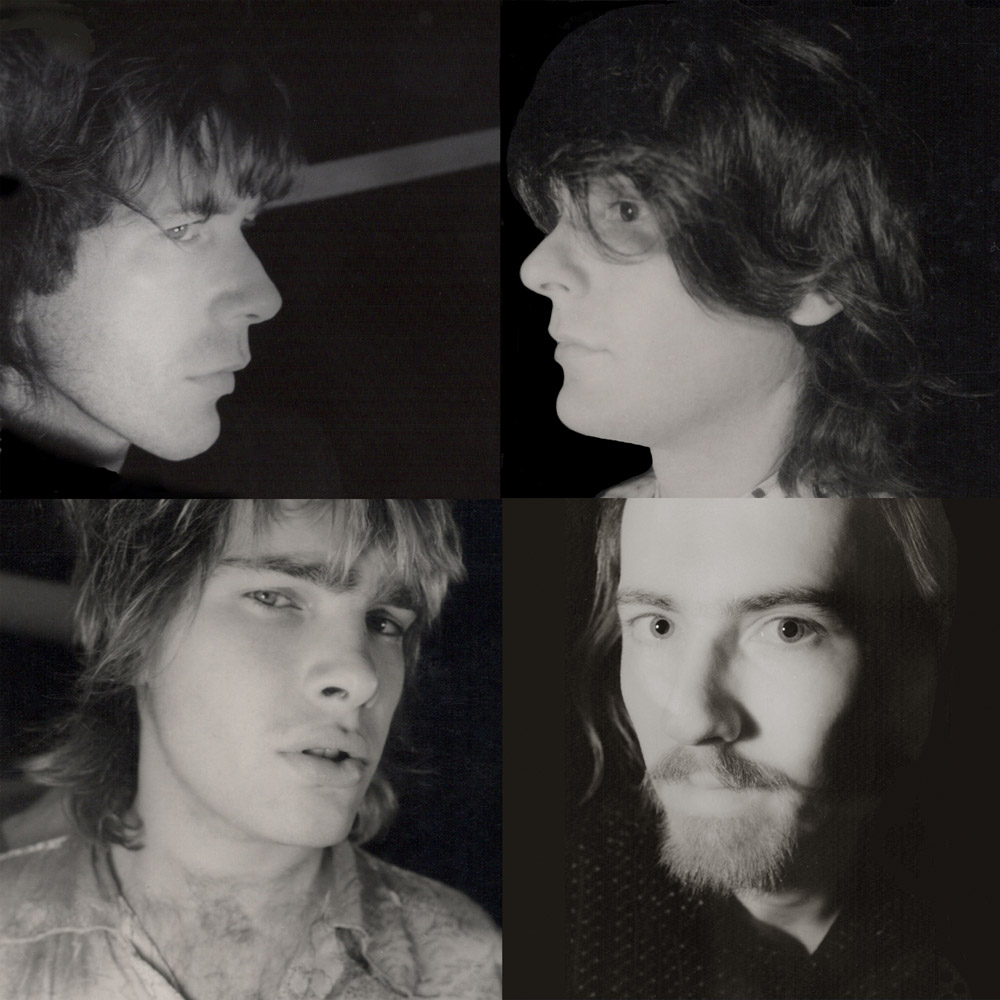
A word on Green Girl: Sleeve Notes
–Leslie Medford, 2019
There are about sixty cassette recordings of The Ophelias playing before the public; recordings that blow between unlistenable and pretty decent. Imagine that forty are unlistenable due to sonic problems with the recording itself (the recorder is too close to the bass, for instance, or too far away in the crowd) – or in the band’s performance (we were having an off night). The pretty decents – twenty then, say – cannot be called a large number, but tracks from this subset populate our live albums O List! and Green Girl. Another word, please, about these selections; it has to do with the amount of extemporaneous composition going on, which made The Ophelias unique in our place and time. On these two live albums more than a third of the words sung are being made up on the spot, likewise at least fifteen percent of the music, and several of the songs are being attempted for the first time. This is not jam band type improvisation, yet in live performance The Ophelias always ventured into improvisational performance art at key points, opening a set with an extemporaneous composition, for instance, or doing the same for an encore. Most of the best performance tapes feature a good deal of extemporaneous singing. Often I would improvise words on top of a fledgling song structure in hope of capturing on tape some spark of lyrical inspiration, or similarly surprise out a new song in a state of complete undress. Some of the vocalizing is embarrassing, sure, that’s easy to acknowledge. I was tripping, questing for something, and I refuse to be embarrassed by this. And in such a state remembering lyrics is a problem generally anyway. Point being: try not to mind the gibberishy bits. Ha! I like to think the lyrics got polished to a pleasing lustre eventually. Regardless, the singing comes unimpeded, with heartstrings and some inspired bandoleering!
Further that…on Green Girl we’re out of the gate with an instrumental section of “The Big Myopian”, a four-pronged, psiloc-spurred gigue, never intoned this way again, magnificently into the breach…of “Lightning Tide” – extemporaneous – Ferrari and I launch into who knows what as Babbitt plugs in…and away we three go to the undiscovered country of November 1984. “Southeast Asian American Blues” combines two rehearsals. I chose to edit back and forth to get the best of Babbitt, and despite the resultant quirkiness I believe the song swings best because of what’s in and what’s left out. We now have entered the von Blankers & Chandler rhythm section period of The Ophelias; brief but spectacular! “There’s A Bell” is unhinged, “Exeunt: Janette With Baby And Ghost” slinks around; the latter combines two run-throughs from 19 March 1985. I created this version of “Exeunt…” using two cassette decks (editing without splicing) in the days immediately after this rehearsal, (and onto which I added the trumpet). We played “Exeunt” live while Babbit was with us, never after. “Mister Rabbit” and “Palindrome” are also from early rehearsals and in primitive form. That’s Reuben saying he got goosebumps from “Mister Rabbit”. Now two songs from our earliest public appearances, “When Winter Comes” and “Scions Of Toadies”. I never did write proper words for “Scions”, another song retired with Babbit’s departure. We set the general chordal and episodic arc of “Scions” in rehearsal, but this vocalizing is out there, off the cuff, with the band wobbling just right, and the center will hold. The rhythm section from “When Winter Comes” and “Scions Of Toadies” is von Blankers & Armour. This continues with “New Society” illuminating the three-piece Ophelias line-up of summer and autumn 1986, which trio was just then recording other first album mainstays as “Palindrome” and “Nocturnal Blonde” at Dancing Dog Studio in Emeryville. On Green Girl “New Society” combines a pre-Dion alternative take, instrumental body, with a live four-piece version from several months thereafter. Dion solos, and von Blankers contributes astonishing New Societies towards the end. Next, the band that performs “Clash Of The Titans”, somehow, breathlessly, euphorically, survives its mad race around Metropolis, practically lapping itself. Clash was performed often. To moshpits and roistering hoodlums, we went cockadoodlums.“The Hanged Man” was fabricated on the spot by a marvellous Arabic concentration of vapours. My recollection is this: a night or two before the gig there was a rehearsal in which we played extempore, and we ended ebullient, thinking we were really onto something, and it was dubbed “The Hanged Man”. At the gig we go down a storm and come roaring to the end of our set, leaving the stage to great tumult, the place being packed. Dion had just joined so the positive reaction caused rejoicing among ourselves. We hadn’t saved anything for a possible encore; everything Dion knew we had already played. I suggested we try the Hanged Man idea as encore, and here is what resulted. My feeling on stage and immediately after was that my compatriots had not remembered how it went! Be that as it may we managed something luminous, and from that moment the song took on a life of its own. “Hanged Man I” is extempore, “Hanged Man II” from three weeks later is only marginally less so as “The Hanged Man” became our go-to freak-out ace-in-the-hole. Therefore, actually practicing it would have been counter-productive! We had a few other songs in the same category, “The Big (Myopian) Buck Boy Spins” foremost among them. I hope you can enjoy a double dose of Myopian: the Babbitt-infused Green Girl opener, now not exactly mirrored by this full on play-within-the-play Medford-vonBlankers-Armour-Dion clozer, which just may go off the rails! Deep breaths and, still, all can return to a semblance of nonchalance should we successfully transmogrify to the roots rock of the old T Rex, whereby the first Ophelias line-up communes once again with the Green Girl. Young and innocent days. First lines. Do you doubt that?
